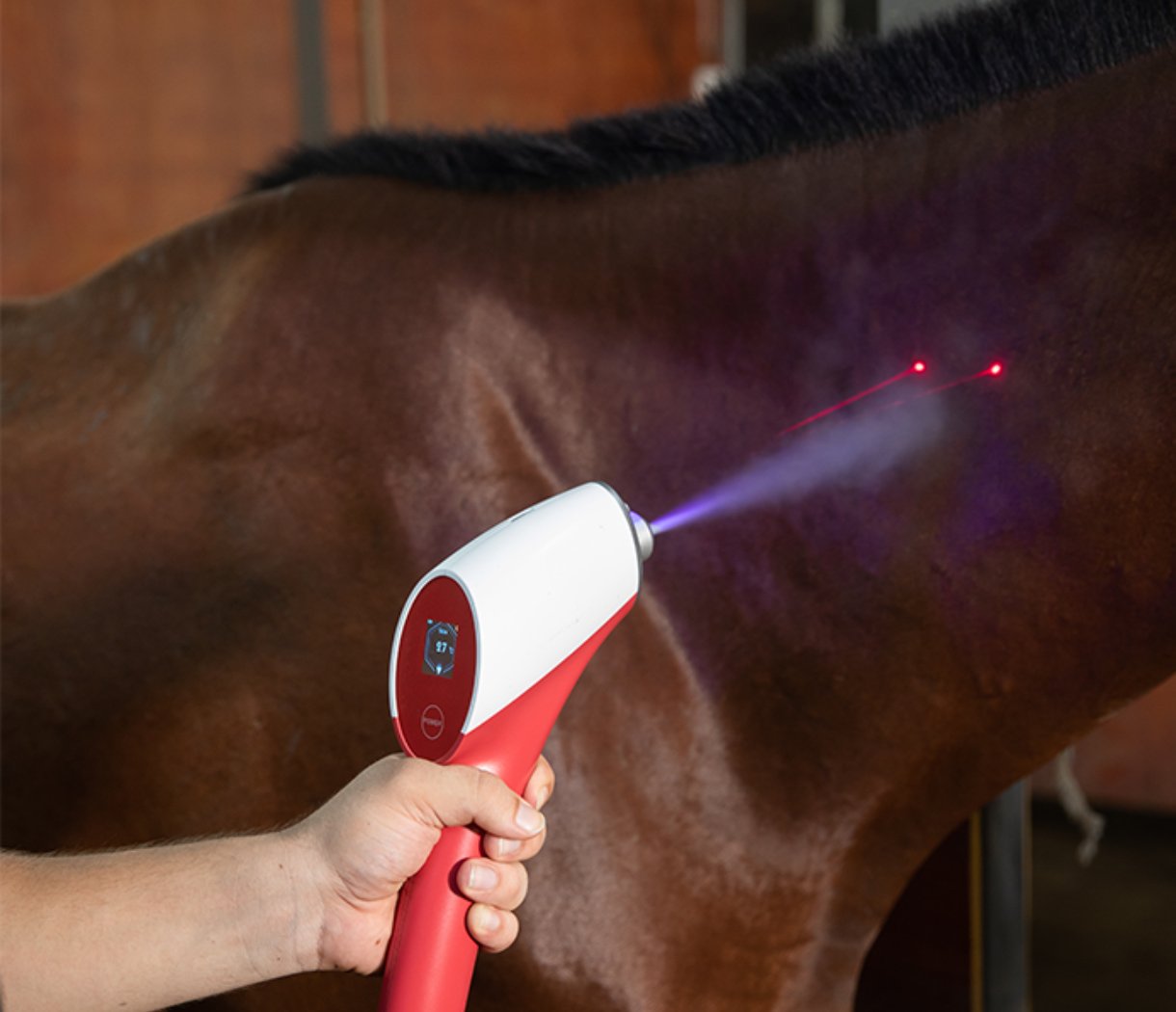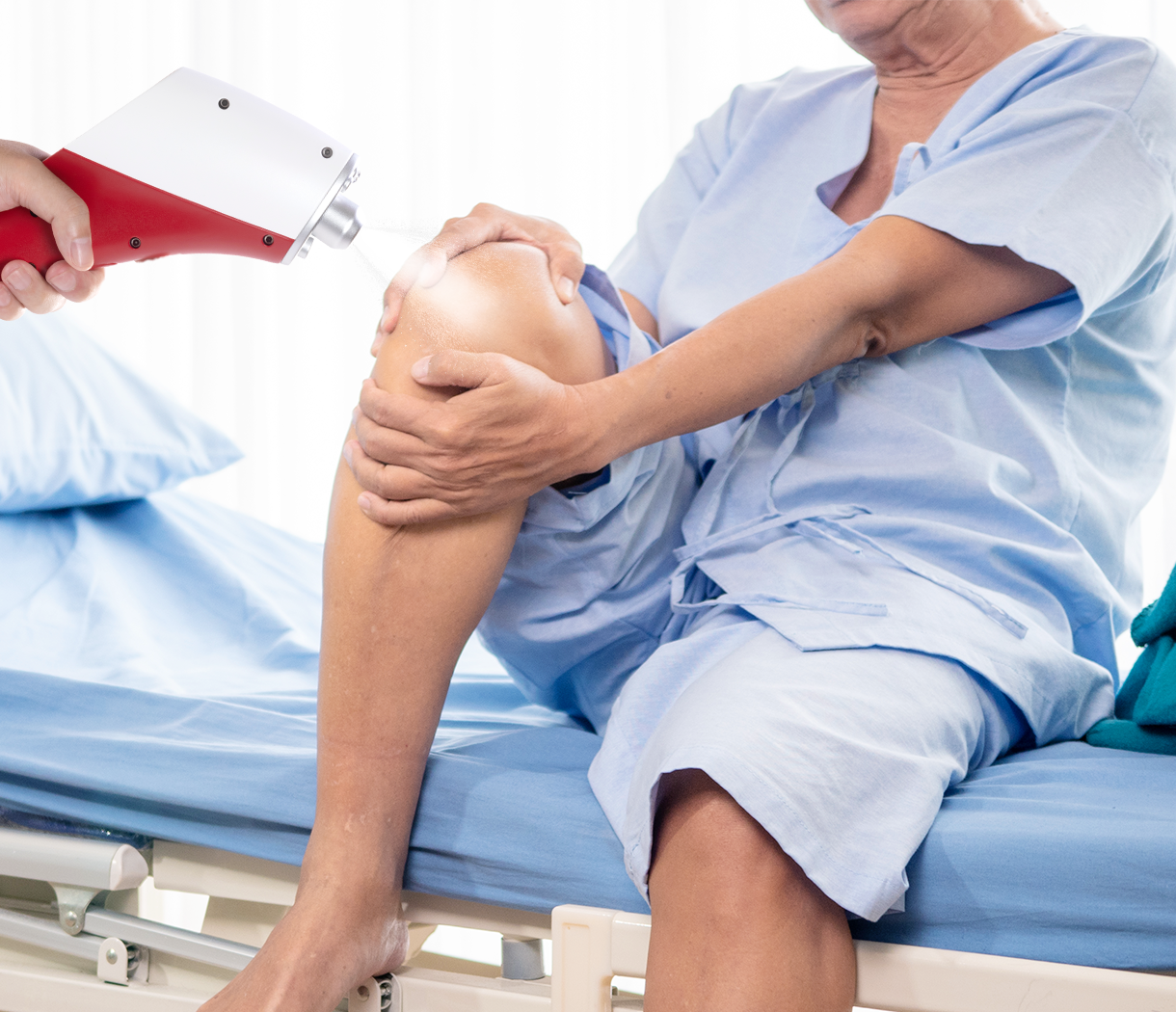Introduction: Understanding Cellulitis in Horses
Cellulitis in horses is a painful and often debilitating condition caused by bacterial infections that lead to widespread inflammation of the skin and soft tissues. Typically affecting the legs, cellulitis causes noticeable swelling, heat, redness, and lameness, and if untreated, can severely impact a horse’s mobility and overall health. Traditional treatments, such as antibiotics and rest, are commonly used, but these methods can sometimes be slow and may not fully address the inflammation and pain. That’s where CO2 cryotherapy comes in—a revolutionary treatment that is changing the way we approach cellulitis recovery in horses.
Overview of CO2 Cryotherapy
CO2 cryotherapy is an advanced cold therapy that uses carbon dioxide (CO2) to target inflamed tissue. It effectively reduces swelling and pain from conditions like cellulitis. Unlike traditional cold treatments such as ice packs or baths, CO2 cryotherapy uses a machine to deliver CO2 at precise temperatures. This allows for controlled application to the affected area. The cooling effect of CO2 cryotherapy constricts blood vessels. This helps limit swelling and manage pain. After treatment, vasodilation (widening of blood vessels) occurs, boosting blood circulation. This process accelerates healing in the affected tissues.
Application of CO2 Cryotherapy in Treating Cellulitis
CO2 cryotherapy works by applying a targeted cooling effect to the inflamed areas affected by cellulitis. The procedure is non-invasive and typically requires just a few minutes per session, making it a highly efficient treatment option. The application of CO2 is precise, allowing veterinarians to focus on the specific tissue that needs attention, helping to reduce damage to surrounding healthy tissue.
During the treatment, CO2 is administered in a controlled manner through a special cryotherapy machine. This machine delivers cold CO2 at varying pressures, depending on the size and severity of the affected area. This cooling effect effectively reduces pain and inflammation while promoting faster tissue regeneration, which is essential for healing cellulitis.
Advantages of CO2 Cryotherapy for Horses with Cellulitis
CO2 cryotherapy offers a wide range of benefits for horses suffering from cellulitis:
- Targeted Pain Relief: The cold temperature provides localized pain relief by numbing the affected area, making it more comfortable for horses to move around after treatment.
- Reduction of Swelling: By cooling the tissues, CO2 cryotherapy helps to constrict blood vessels and reduce inflammation, decreasing swelling that often accompanies cellulitis.
- Accelerated Healing: The treatment helps promote better circulation in the treated area, allowing for faster nutrient delivery and waste removal, which speeds up the healing process.
- Non-invasive and Stress-Free: CO2 cryotherapy is a gentle, non-invasive option that avoids the need for painful injections or surgery. The therapy is quick and easy to administer, making it suitable for horses of all temperaments.
- Promotes Mobility: As the swelling goes down and pain subsides, horses can experience a noticeable improvement in mobility, allowing them to return to their regular activities and training.
- Proven Results: CO2 cryotherapy is a safe and well-documented method of treating various soft tissue and inflammatory conditions in horses. It has a high success rate in reducing symptoms and speeding recovery for horses with cellulitis.
Conclusion
CO2 cryotherapy is a highly effective treatment for horses with cellulitis. It offers significant advantages over traditional methods. The treatment works quickly, reduces pain and swelling, and promotes faster healing—all in a non-invasive and stress-free manner. CO2 cryotherapy provides precise, targeted treatment with minimal downtime. This allows horses to recover faster and return to their usual activities sooner. For horse owners and veterinarians looking for an efficient solution for cellulitis, CO2 cryotherapy is a game-changer. It’s an exciting, innovative option that provides relief and accelerates healing, giving horses the best chance for a full recovery.



